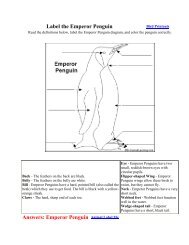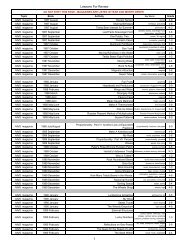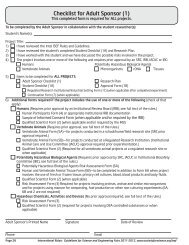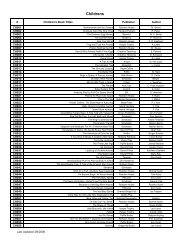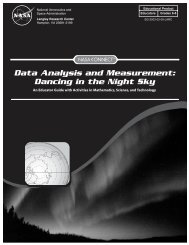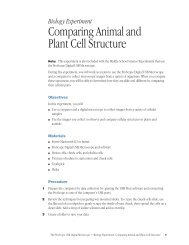BIOGRAPHY OF A RIVER
BIOGRAPHY OF A RIVER
BIOGRAPHY OF A RIVER
You also want an ePaper? Increase the reach of your titles
YUMPU automatically turns print PDFs into web optimized ePapers that Google loves.
9-12 HELP! LAKE OVERTURNING!OBJECTIVESThe student will do the following:1. Define the terms associated with this lesson.2. Explain the process of overturning and its importance toaquatic life.BACKGROUND INFORMATIONOverturning refers to the phenomenon of a lake exchanging waterfrom the bottom to the top and from the top to the bottom. Thisprocess is very important to the health of the lake’s aquatic life.Overturning is also an important factor in the recovery of a lakeafter it has been contaminated with a pollutant. Lakes and pondsare lentic systems, which means that the surface water is standingas opposed to lotic or flowing systems, such as rivers. It is muchharder for a lake to recover from pollution than it is for a river, evena slow flowing one, because the time period for a total overturningof a lake may be as frequently as annually or as long as 10 to 100years. During this time, pollutants may build up and reach lethallevels, especially if the influx of contaminants is constant or in largevolumes.SUBJECTS:Science (Biology, Earth Science,Environmental Science)TIME:2 class periodsMATERIALS:student handouts, one per student4 large sheets of drawing paper and 4boxes of crayonshot plate2 beakersfood coloringtable salt2 large glass containers with openmouthrefrigerator or ice cubesfanladlefunneltubingTo understand the process of overturning, it is important to know two different categories of zones intowhich lakes may be divided. One category is based on the depth of the water; the other is based on thetemperature of the water.The first set of zones is determined by the depth of the water that, in turn, determines the amount of sunlightthat is able to penetrate the water. The amount of sunlight determines the amount and type of plant life andthus the amount and type of aquatic animal life. The three zones in this classification are:y y




